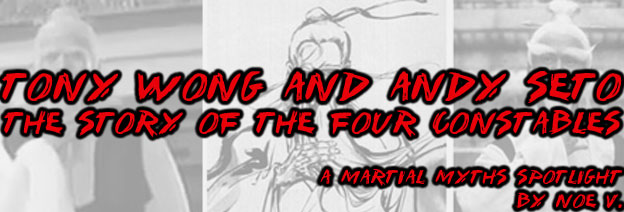
Tony Wong was not the first manhua writer or artist. He was undoubtedly the most influential though. When he started off his work as a teenager in the 1960's there was not much to look at. He was a terrible artist that relied on shock value to move comics. Once he outgrew his teen phase and began developing memorable characters and improved his drawing techniques there would be no stopping him.
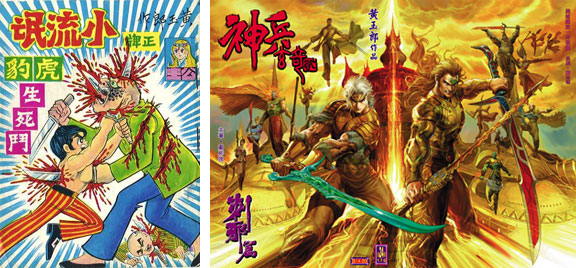
His contributions to the comics medium were hard to ignore. He just about single-handedly modernized the Hong Kong comics industry, and created a publishing empire filled with former rivals as well as new talent. The painted art of the manhua was more influential than Japanese manga art to the growing wave of Korean comic artists and designers. This shaping of styles would never have happened without Tony Wong. Tony was eventually tapped to produce a story featuring Batman for DC. The story was well put together as most of Wong’s best work. The master storyteller was great at hiding plot twists in plain sight and revealing them at the most opportune moments. In the story Batman inspired the creation of a Chinese vigilante named Night Dragon. Both were on the trail of a crime lord that was filming the murders of people and putting them online for profit.
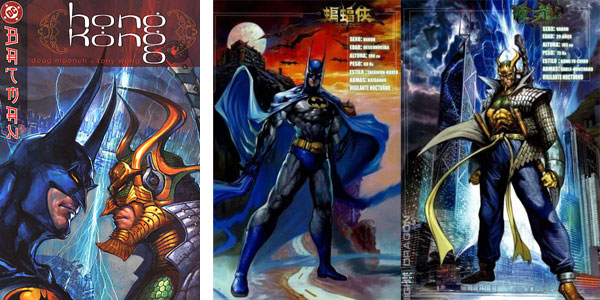
Those interested in studying the nuances between manhua and comic books, especially the difference in the art, should pick up the title Batman: Hong Kong.
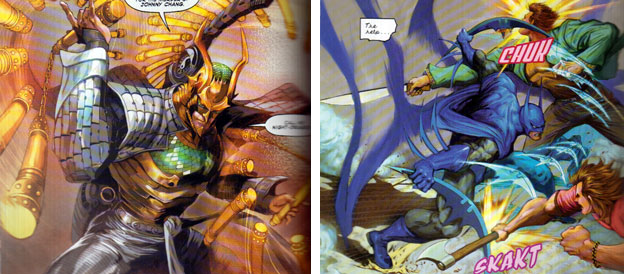
Wong’s most popular series, Weapons of the Gods, inspired the development of both a tabletop and MMO game. This game would influence the character designs and art direction for South Korean MMO’s as much as any manhua title produced by Wong did.
Tony was an exceptional character designer. This went for the humans, animals and monsters that went into his books. He knew how to stage battles between these characters and present them in the best possible way. He was also one of the early artists to draw different forms of chi energy attacks and magical attacks that predated Hokuto no Ken. For example, in the Weapons of the Gods one of the characters had musical instruments that allowed him to hypnotize or even kill his opponents with sounds.
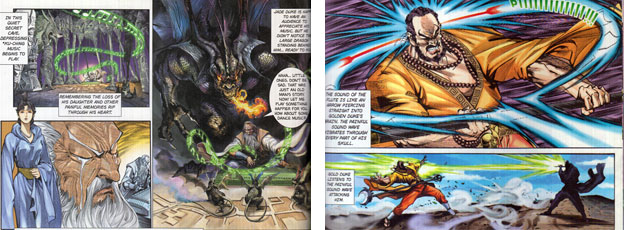
Tony’s greatest strength was not his art as much as it was his writing. Mr. Wong had a way of creating very personable characters. He made them emotive, able to enter into some witty banter when they weren’t beating up on each other. Arguably the best title ever created by Tony did not feature his art.
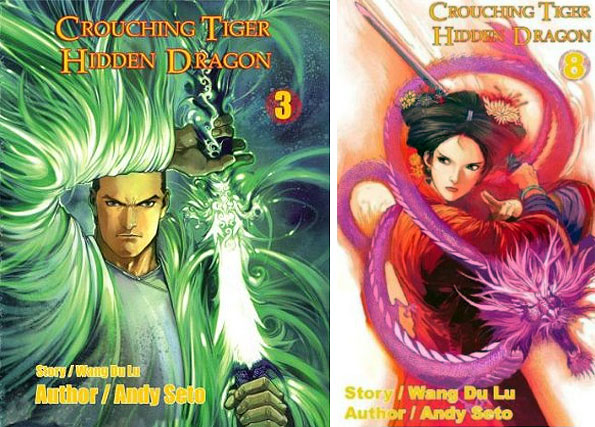
Andy Seto was one of the best manhua artists in the business. He handled many high profile adaptations of Hong Kong films, including Shaolin Soccer and Crouching Tiger Hidden Dragon. His work in paint was sublime. I would rank him among the best western comic illustrators like Alex Ross and Bruce Timm. When Andy’s talents were combined with Tony Wong’s writing then there was no stopping him.

Andy was the artist behind the Four Constables books. These books featured the staples of manhua design and coloring. They broke the mold however in that they were digitally painted. By going digital Andy was able to achieve the same bright colors that had been a staple in US comics since the 1990’s. He was able to take the comic medium to new levels though by combining his training in the traditional manhua format with new technology. This included using amazing poses and perspectives in fighting sequences that were usually never seen in the US.
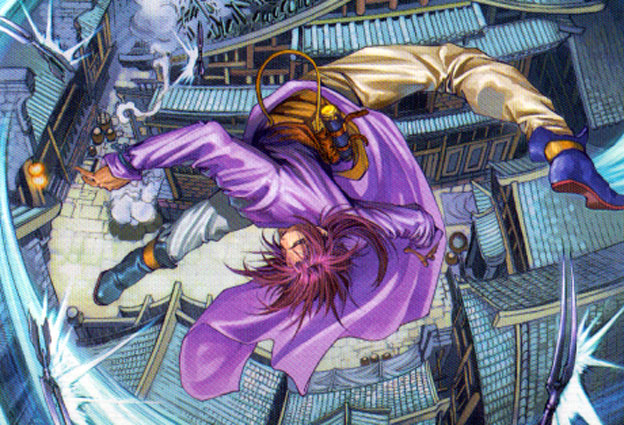
The painted panels could be vibrant or muted depending on the effect he was trying to achieve. These things would have been all but impossible to reproduce on canvas or using older printing techniques.
Each battle in the Four Constables was the equivalent of a great action sequence in a film or even a dramatic videogame encounter. The poses and strikes were framed for the best visual impact and the characters actually named their stances (special moves) as they were performing them. Those interested in learning how to present a fight between two martial arts masters with fantastic powers should dissect Seto’s work. It was almost lamentable that he was never tapped to produce a Street Fighter manhua other than the occasional Street Fighter comic cover.

Seto was a master of design. Helping bring the characters that Tony wrote to life. He was able to design beautiful and graceful characters as easily as he could present powerful ones.
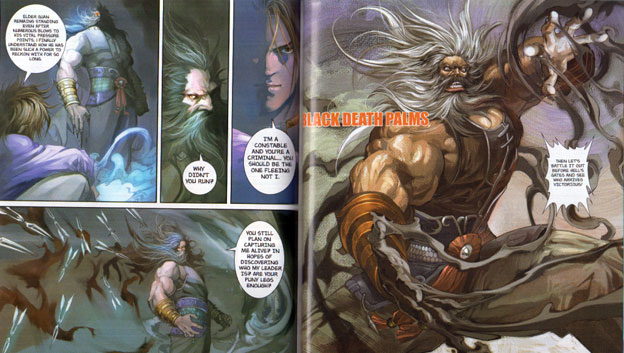
The Four Constables could be considered the closest to a western-inspired superhero team while still preserving the manhua conventions. The characters were all martial arts masters that had a specialty. The fourth constable was nicknamed Cold Blooded, he was a master of swordplay. The third was a master of the light foot technique. Few could match the powerful kicks of the Life Snatcher. The second was Iron Hands and had been mentioned previously in this series. The leader of the four was nicknamed Emotionless. He was actually paralyzed from the waist down and moved on a golden “Cloud” wheelchair. He studied the hidden weapons techniques. He knew how to interrupt the chi meridians and could kill with a single attack. Every inch of his robe was lined with weapons and his wheelchair was as well. He used the light foot techniques with his hands and could propel himself and his chair over any obstacle.
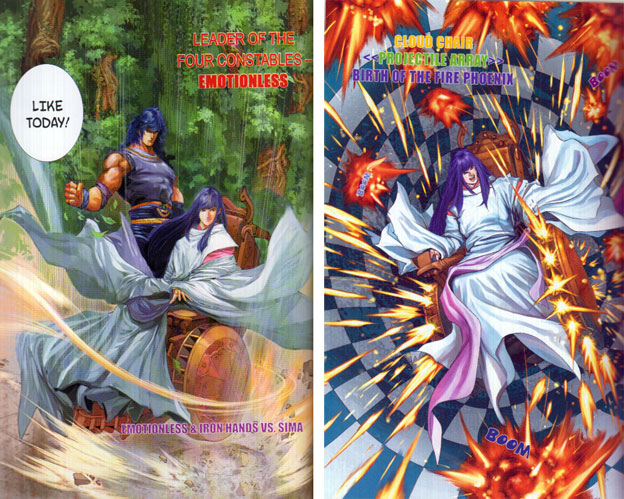
The Four Constables were usually working cases independently. Whenever they were called together it was because there was something that could potentially topple the kingdom. Fans of great writing, fantastic art and memorable battles should try and track down a copy of the books.
Tony and Andy were the pinnacle of the manhua craft. They knew how to entertain audiences with original material as much as with licensed work. The Chinese that contributed some of the largest inspirational points for the SF series often got the least amount of credit. This was possibly due to a tradition that appropriated (stole) almost as much design and IP as they had created in the past half century. When Hong Kong began producing manhua based on fighting games they tended to poach the best designs and art from those working at Capcom and the Japanese artists publishing licensed manga. This tradition would hurt the reputation of the format and even some of the most talented creators in the industry. The next blog will explore these rarely discussed issues. Were there any manhua books that you collected? Let me know in the comments section please. As always if you would like to sponsor me please visit my Patreon page and consider donating each month, even as little as $1 would help make better blogs and even podcasts!

No comments:
Post a Comment